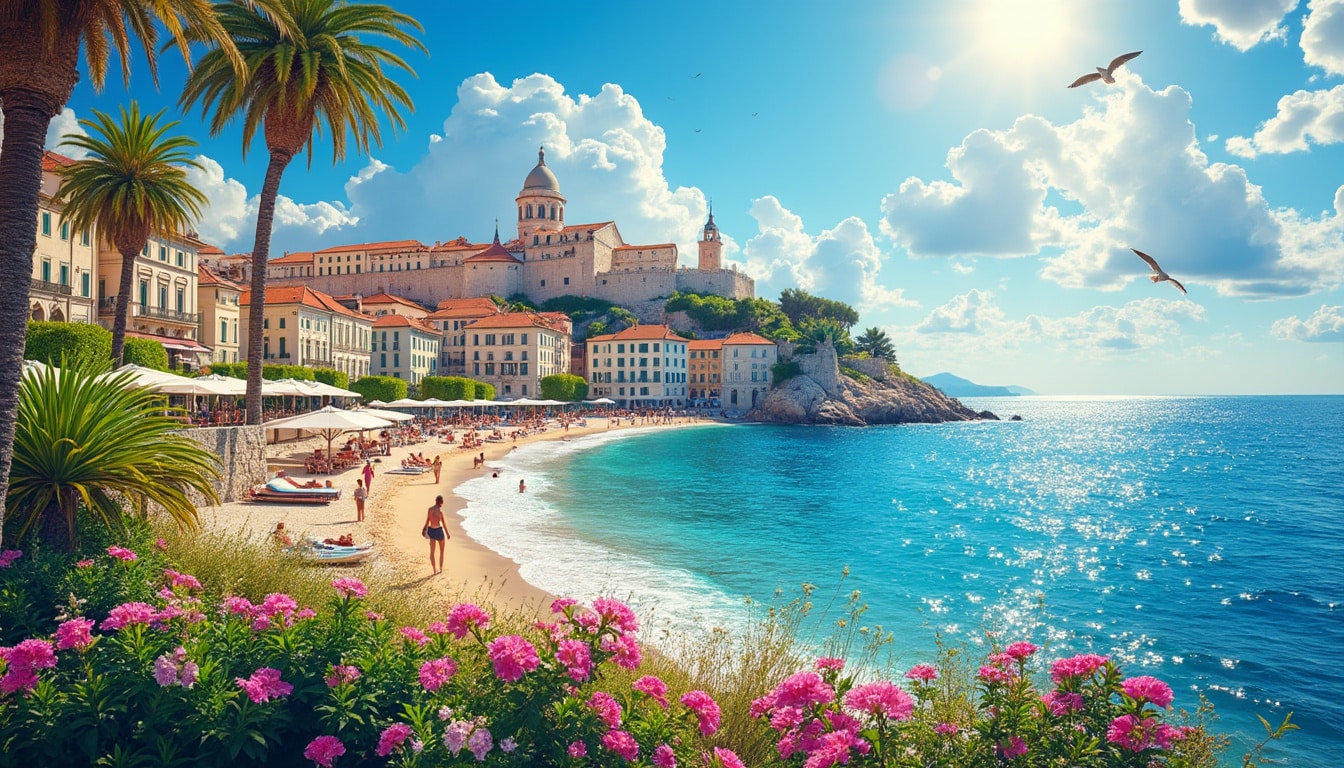Embracing the picturesque views of the Dalmatian Coast, Split is not only a haven for history enthusiasts but also an intriguing destination due to its unique Mediterranean climate. This city perfectly combines cultural richness with weather nuances, offering a spectrum of experiences for both the residents and travelers. 🏖️ With the seasonal shifts, Split exhibits a broad range of temperatures, humidity levels, and sunshine hours, each contributing to a distinctive atmosphere. Whether basking in the reliable sunshine of summer or relishing the mild winters, weather plays a pivotal role in shaping the daily life and tourism in Split.
Exploring Split’s Seasonal Temperatures
Split, known for its captivating coastal beauty, experiences a significant temperature variation between seasons. The city sees its warmest months during July and August, where daytime temperatures can soar to a comfortable 27°C. These months are characterized by long, sunny days, ideal for beachgoers and water sports enthusiasts. On the flip side, winter sees a dip in temperatures, reaching an average maximum of 11°C in February, which is the coldest month.
While daytime temperatures provide the perfect setting for outdoor activities, it is essential to consider the drop during nighttime. In February, nighttime temperatures can plummet to a crisp 5°C, reminding residents and visitors of winter’s bite. Such contrasts necessitate versatile attire, including items from WeatherTech and The North Face to offer comfort and adaptability across the day.
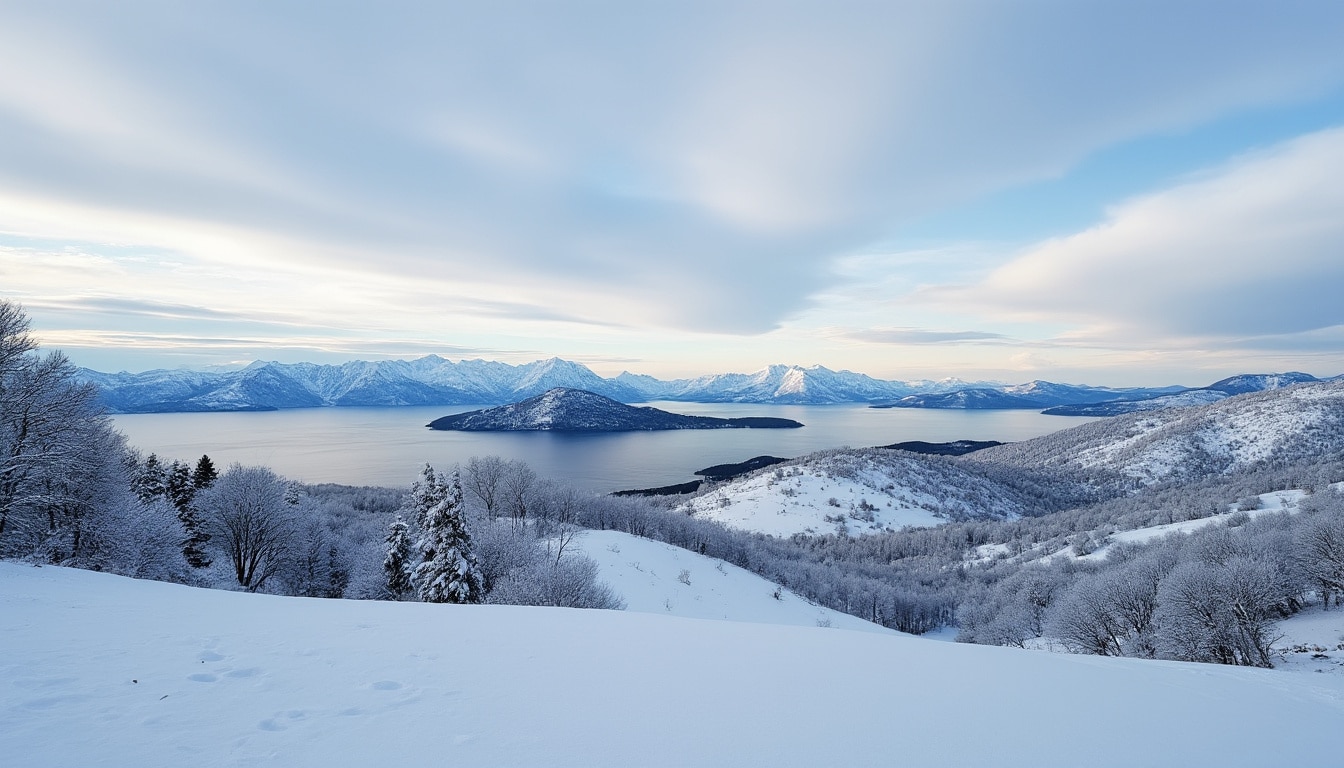
The Best Time to Visit Split for Pleasant Weather
For those planning a trip, the quintessential months of May, June, and September are recommended. Travel enthusiasts often regard these months as the ideal time to savor Split’s beauty, with temperatures ranging from 20°C to 26°C. These months not only promise a pleasant climate but also fewer crowds, offering an enchanting experience at popular sites.
The fluctuations in temperature throughout the year underscore the dynamic nature of Split’s climate. Each season offers its unique allure, drawing the attention of tourists and nature lovers alike.
Understanding the Precipitation Patterns in Split
The precipitation in Split is an essential component of its weather patterns, varying significantly with the changing seasons. The city registers an annual average of 1251 mm of rainfall, predominantly occurring during the latter months. November stands out as the wettest month, with a staggering 217 mm of rainfall spread over 14 days. This incline in November showers echoes the city’s transition from the drier months.
In contrast, July presents itself as the driest month, with precipitation amounting to a mere 26 mm across 9 days. This stark contrast between dry and wet months paves the way for diverse experiences in outdoor activities—from splashing in sporadic summer rain to enjoying the cooler breezes of autumn.
| Month | Precipitation (mm) | Rainy Days |
|---|---|---|
| November | 217 mm | 14 days |
| July | 26 mm | 9 days |
This knowledge allows travelers to plan wisely, considering waterproof gear from brands like Columbia or Marmot during their visits, ensuring they stay prepared regardless of the weather challenges they might face.
The Sunshine and Daylight Dynamics in Split
Sunshine, a beloved feature of Split’s climate, significantly enriches its allure as a travel destination. The city enjoys extended daylight during the summer months, with July being the sunniest, basking under a bright sun for approximately 11.5 hours daily. Such generous sunshine hours bestow ample opportunities for tourists to indulge in a range of outdoor activities—be it hiking on nearby trails or savoring the sunset from the scenic Marjan Hill.
As the year progresses towards December, the daylight considerably shortens, offering around 4.4 hours of sunshine per day. This seasonal reduction in sunshine creates an intimate and cozy ambiance, perfect for exploring the city’s rich historical and cultural sites with fewer crowds.
The year’s sunshine variation in Split enhances its charm and poses contrasting experiences, attracting visitors who prefer different climatic conditions.
Essential Weather Gear for Different Seasons
Navigating the diverse weather conditions in Split necessitates thoughtful preparation, particularly regarding clothing and gear selection. With the changing seasons, Split demands layers and appropriate attire to accommodate the variations in heat, rain, and chilly breezes.
Summer months are effortlessly enveloped with warmth, and brands like Patagonia and Arc’teryx offer breathable, lightweight clothing that suits active lifestyles. Complement these with sunscreen and hats from Helly Hansen to avert sunburn during the long sunny days.
Winter in Split, though milder compared to other parts of Croatia, still demands protective outerwear. Gears from Timberland and Black Diamond provide heat retention, ensuring comfort during cooler evenings and nights.
| Season | Recommended Gear | Brands |
|---|---|---|
| Summer | Lightweight clothing, hats | Patagonia, Arc’teryx, Helly Hansen |
| Winter | Insulated jackets, thermal wear | Timberland, Black Diamond |
This seasonal guide facilitates a pleasant travel experience, enriching your stay with comfort and readiness against sudden climatic twists that Split may present.
Embracing Split’s Unique Climate
A visit to Split offers more than just breathtaking views and historical wonders. The city’s climate, with its distinct seasonal behaviors, can seem daunting yet fascinating at the same time. Understanding its climate patterns allows visitors to plan effectively, ensuring that every aspect of their trip aligns with their preferences, be it leisurely beach days or delving into the city’s historical legacy during the milder seasons.
Whether strolling through the vibrant downtown or setting sail on the pristine Adriatic waters, Split’s weather promises a captivating experience. The dance of weather elements across the year enriches the allure of the city and its diverse activities.
- ⚓ Explore ancient sites like Diocletian’s Palace during cooler months.
- 🏊♂️ Enjoy water sports in the sun-drenched summer.
- 🌅 Catch the magical sunsets from Marjan Hill during spring or fall.
An intrinsic understanding of Split’s climate is instrumental in crafting an unforgettable travel story. As you plan your journey, consider the adventurous tales awaiting through every corner, sunlight beam, and soft drizzle that this iconic city has to offer. For more travel tips, check out Split Holidays.
Frequently Asked Questions
What is the best time to visit Split for sunshine?
April through October offers the best sunshine with minimal rain.
Which month has the highest rainfall in Split?
November is the wettest month with the highest average rainfall.
Are winter months in Split too cold for tourism?
Winter in Split is relatively mild compared to other regions, offering a cozy and less crowded experience.
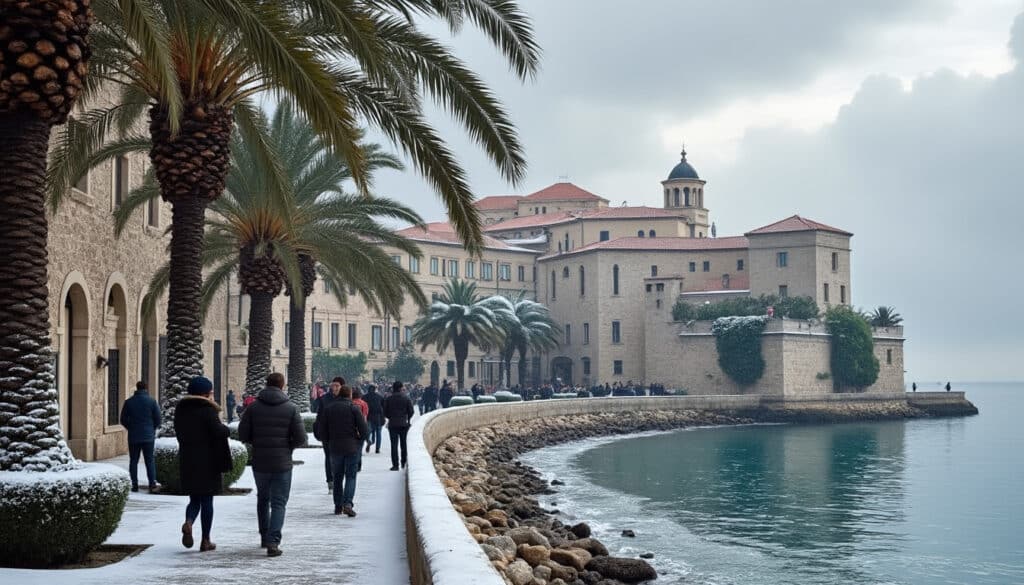
While Split, Croatia is widely celebrated for its radiant summers with tourists flocking to its historic sites and fetching beaches, the cold weather presents a different yet equally captivating charm. As a local guide with a keen interest in history,…

Split, a stunning coastal city in Croatia, is famed for its Mediterranean charm, historical architecture, and vibrant culture. But as the winter months approach, many potential visitors are left with a burning question: does it snow in Split? While snow…

Flooding and natural risks in Split
The picturesque city of Split, renowned for its stunning architecture and rich history, faces a delicate challenge that requires immediate attention: the management of natural risks. As a city cradled along the Adriatic coast, Split enjoys the beauty of the…
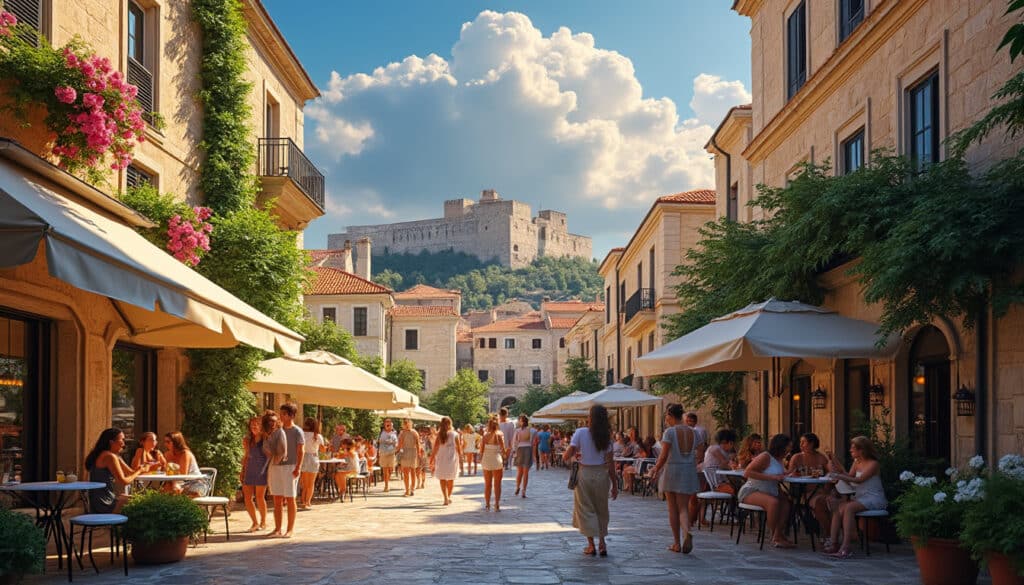
Split, Croatia is a city known for its stunning coastal views, rich history, and vibrant culture. Situated on the eastern shore of the Adriatic Sea, this picturesque location is not only famous for its architectural wonders and buzzing seafront but…

Is Split warm throughout the year?
Situated along the picturesque Adriatic coastline, Split, Croatia, is often heralded for its warm climate that seems to envelop the city with a perennial embrace. Let’s dive deep into understanding whether Split is indeed warm throughout the year and what…
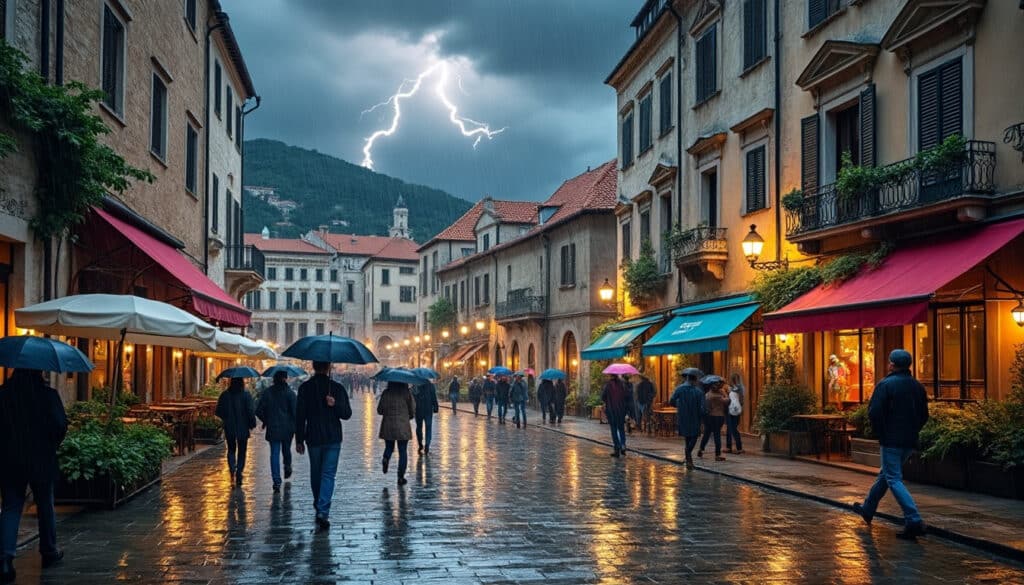
Rain and precipitation in Split
Split, the charming city located along the Dalmatian Coast in Croatia, is known for its vibrant culture, historical sites, and scenic beauty. But aside from its cultural significance, the weather patterns, including rain and precipitation, play a vital role in…

Nestled along the azure Adriatic Coast, Split offers a distinct charm that varies with each season. Whether you’re drawn to the sun-drenched beaches in the height of summer or the tranquil ambiance of its less crowded months, Split promises an…
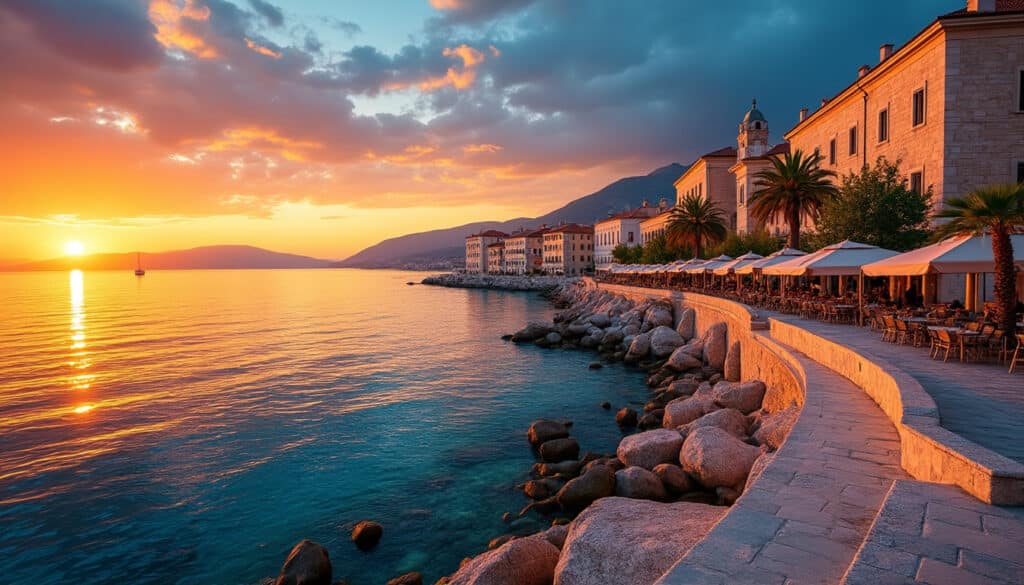
Split, a picturesque city along the Croatian Adriatic coast, is renowned not only for its stunning ancient architecture and vibrant culture but also for its breathtaking sunrises. The strategic location of Split, nestled between the blue of the sea and…
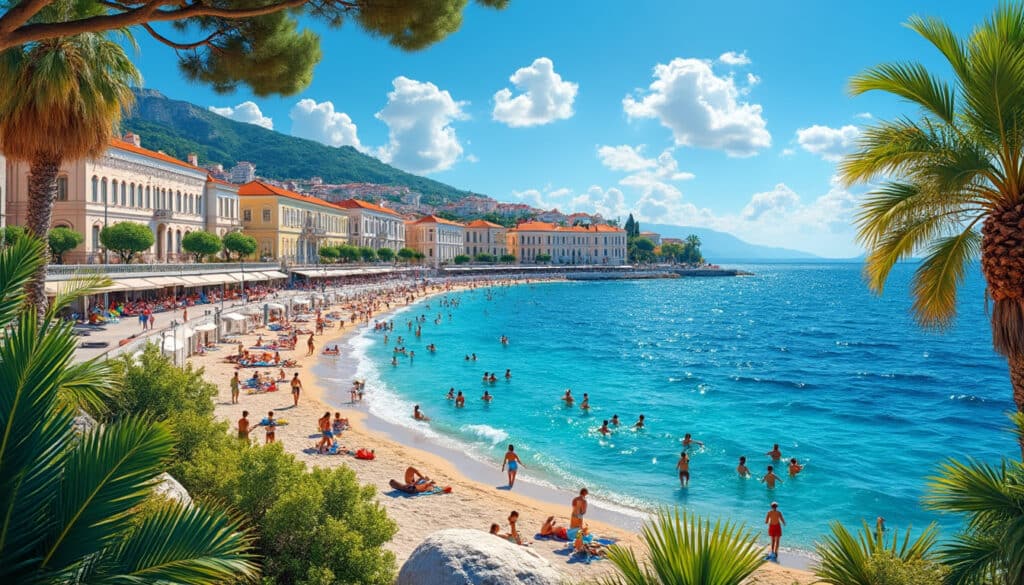
What is the weather like in Split?
Split, one of Croatia’s most vibrant coastal cities, is renowned not only for its rich cultural heritage and stunning landscapes but also for its unique climate. Travelers and residents often find themselves captivated by the mild and pleasant weather that…
Split, a picturesque city perched on the Dalmatian Coast of Croatia, is renowned for its stunning blend of ancient history and vibrant modern life. For both locals and tourists, understanding the nuances of its weather is crucial in ensuring a…
In Split, a city that gracefully hugs the Dalmatian coast, the heat of summer is not just a season but a vibrant experience. The panoramic views of the Adriatic, coupled with historic charm, render Split a captivating location. Summers are…

